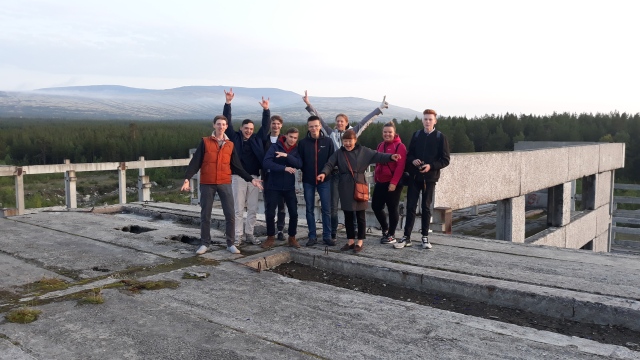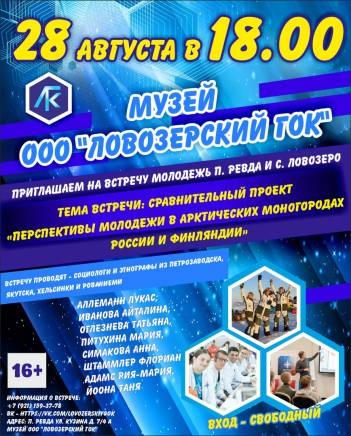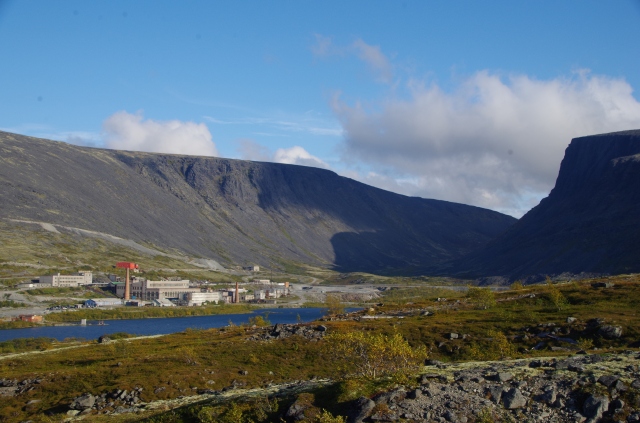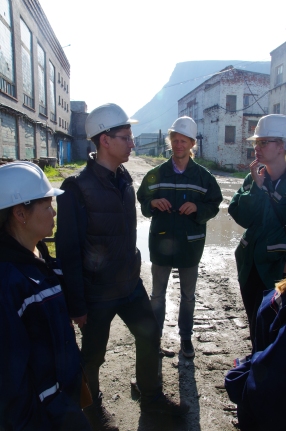Last week, the mid-term meeting of our research project on youth in Arctic industrial settlements (WOLLIE) took place in Kirovsk and Revda, two mono-industrial cities in the Murmansk Region, North-West Russia. While discussing our project goals and achievements so far, we also visited several places. Being highly industrialised, densely populated and relatively compact, the Murmansk Region showcases the huge diversity of mono-industrial settings in the Arctic.

Single-industry towns are widespread all over the Arctic. What can they offer to their young generation inhabitants? Why do young people want to leave, or to stay? What can be done to make them stay, or return? These are the main questions that WOLLIE is trying to answer.

WOLLIE is co-financed on equal terms by the two major funding sources for research in Finland and Russia, the Academy of Finland and the Russian Foundation for Basic Research. Correspondingly, our team consists of scholars from both countries: the universities of Yakutsk and Petrozavodsk on the Russian side, and of Lapland (Arctic Centre) and Helsinki (Aleksanteri Institute) on the Finnish side. The places where we do research are Finnish Lapland, the Murmansk Region, Yamal and Sakha (Yakutia).
Our multidisciplinary approach includes policy and document analysis by our legal and political sciences colleagues, surveying by our partners from sociology, and our own ethnographic, interpretive approach with longer research stays among both youth and company/city administrators. The project has two goals: An applied one, by supporting a better communication between both sides and thus improving Arctic mono-industrial city viability; and a theoretical one, by refining an anthropology of well-being on the example of the urban settings we work in.
While wages are the lowest in the Murmansk Region in comparison with all research regions of the project, according to our survey colleagues from Petrozavodsk, it is there where the youth (15 to 30 years of age) feels the happiest and the safest. While in anthropology we think that is impossible to make normative statements on happiness nor to make a conclusive happiness comparison across regions using objective indicators, we still take the survey results as a point of orientation during our fieldwork. This is especially interesting for our ethnographic fieldwork, as we can try to find out what are the non-monetary factors influencing perceptions of well-being among Arctic youth.

Let’s take as an example the two cities we visited during this trip: despite their territorial closeness, the mining cities of Revda and Kirovsk, appear very differently: While in Kirovsk the company’s corporate identity-building is ubiquitous, in Revda the company remains grey and invisible. Revda struggles with strong youth outmigration, high fluctuation and absence rates at the town-forming enterprise, low wages and one of the lowest living standards of the region.

Conversely, Kirovsk attracts employees throughout the region (also from Revda), with its better salaries and fringe benefits. The products of both town-forming enterprises are in high demand and could potentially contribute to wealth and well-being in both cities. Nevertheless, people pursue their ‘happiness projects’ in both places. One thing we noticed in Revda is that, despite widespread complaints about low wages, those people who stay do it not so much because there would be no alternative (the better paying mines in the neighbouring cities look for people all the time). Rather, a low wage goes hand in hand with low productivity and a relaxed regime at work, which means you have opportunities for a nap, for a cigarette, for personal sideline activities etc. Who decides to work here, makes this tacit agreement a part of their own projections on well-being.

At any rate, the statistical happiness results, standing at odds with low income and other adversities of life in single-industry towns, motivate us to pursue our goal to contribute in our project to the growing corpus of anthropological research on ‘well-being’ and ‘happiness’, including questions on love and care, mutual support, community building, etc. Recently, Sherry Ortner critically commented on the turn towards anthropologies of the good (Ortner 2016). While research is still-ongoing, we can already now fully subscribe to Ortner’s claim that looking for and striving for the good certainly stands not at odds with the dark sides of life but goes hand in hand with them. We work thus against widespread dichotomies of happiness versus social suffering, and towards seeing the mutual entanglements between the making of happiness and navigating the difficulties of life in Arctic single industry towns.



